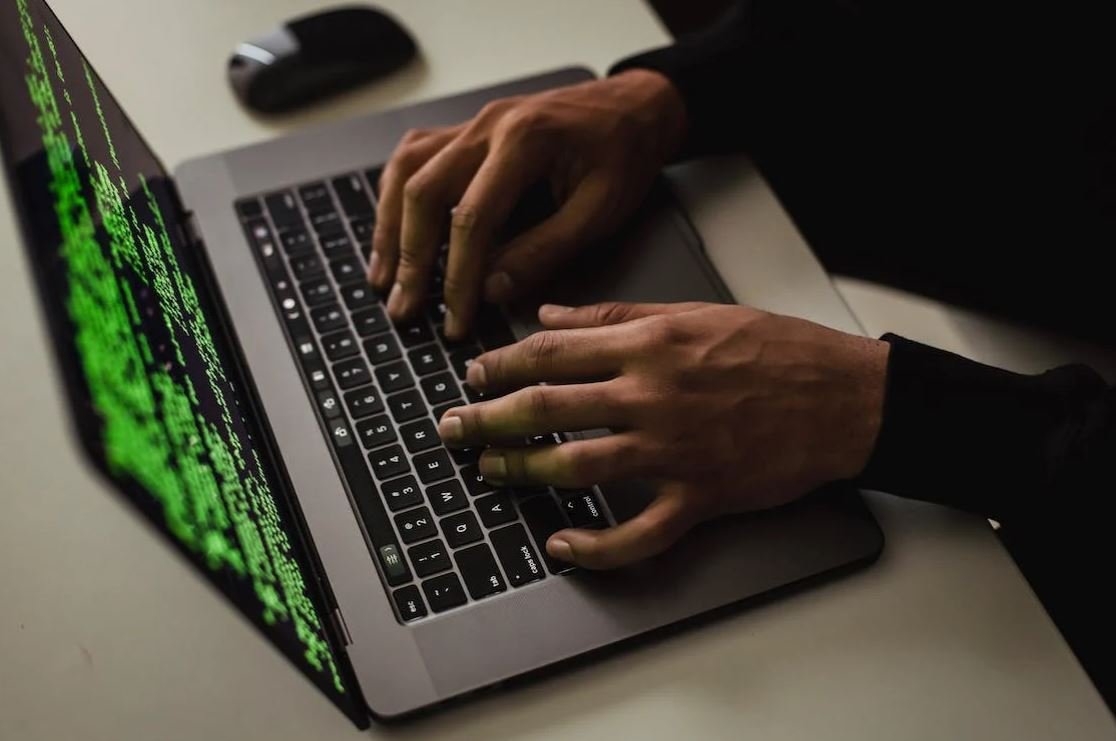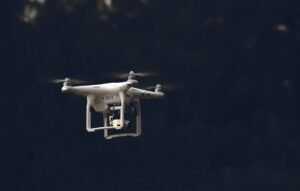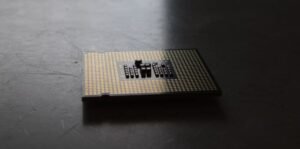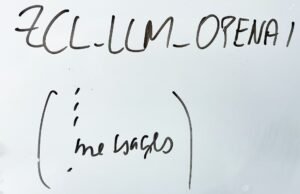AI Artist List
Artificial Intelligence (AI) has made significant advancements in various fields, and one such domain where AI has made a profound impact is art. AI-powered algorithms have enabled machines to create art autonomously, resulting in a growing list of impressive AI artists. This article provides an overview of some prominent AI artists and their remarkable creations.
Key Takeaways:
- Artificial Intelligence (AI) is transforming the world of art by enabling machines to create artworks autonomously.
- Prominent AI artists have emerged, producing remarkable creations that blur the line between human and machine creativity.
- The AI art industry is experiencing rapid growth, with increased recognition and acceptance from the art community.
1. Ai-Da – The First AI Robot Artist
Ai-Da, named after Ada Lovelace, the world’s first computer programmer, is a humanoid robot artist developed by a team in the United Kingdom. **She** is capable of creating captivating drawings and paintings using a robotic arm and advanced AI algorithms.
- Ai-Da combines sketching and painting techniques to produce unique artistic pieces.
- Her creations have been exhibited in prestigious galleries across the globe.
2. DeepArt – Transforming Photos into Art
DeepArt is an AI-powered platform that uses deep learning algorithms to transform ordinary photos into stunning art pieces. Using a technique called neural style transfer, DeepArt can replicate the style of famous artworks or apply creative filters to images.
- DeepArt allows users to interactively manipulate images to achieve desired artistic effects.
- It has gained popularity among photography enthusiasts and social media users.
3. Obvious – AI-Generated Art
Obvious, a Paris-based collective, gained international recognition in 2018 for selling an AI-generated artwork at an auction house for a substantial sum. Their artwork, “Portrait of Edmond de Belamy,” was created using a generative adversarial network (GAN), a type of AI algorithm that pits two neural networks against each other.
- Obvious explores the boundaries between art, technology, and AI.
- Their success at the auction house sparked significant interest in AI-generated art.
AI Artist Comparison:
| Artist | Specialty | Notable Artworks |
|---|---|---|
| Ai-Da | Robot Drawing and Painting | Various drawings and paintings exhibited globally |
| DeepArt | Photo-to-Art Transformation | Replicating famous artwork styles on photos |
| Obvious | AI-Generated Art | “Portrait of Edmond de Belamy” sold at auction |
The Future of AI in Art
The rise of AI artists has sparked debates and discussions within the art community about the nature of creativity and the role of AI in artistic production. As AI continues to evolve, we can expect even more sophisticated and diverse AI artists to emerge, challenging our perceptions of what art can be.
- AI artists have the potential to push the boundaries of artistic creation and inspire new forms of expression.
- AI algorithms can aid artists in exploring unconventional ideas and generating novel artistic concepts.
Investing in AI Art
The increasing recognition and demand for AI-generated art have led to a rise in investments in this emerging market. Collectors and art enthusiasts are starting to appreciate the unique value of AI-created artworks, leading to an expanding market for AI art.
- Investing in AI art can offer opportunities for both financial gains and an exploration of the cutting-edge intersection of art and technology.
- The market for AI art is still evolving, creating a potential space for early adopters and innovators.
The Impact of AI on the Art World
The introduction of AI artists has sparked a shift in the art world, challenging traditional notions of creativity and authorship. While some fear the displacement of human artists, others see AI as a tool to enhance human artistic capabilities.
The integration of AI in art raises fascinating ethical and philosophical questions.
AI Artist Gallery:
| Artist | Notable Artwork |
|---|---|
| Ai-Da | View Artwork |
| DeepArt | View Artwork |
| Obvious | View Artwork |
The intersection of artificial intelligence and art continues to evolve, creating new horizons for creativity and expression. While AI artists are still in their early stages, their impact on the art world is undeniable. By merging human ingenuity with the capabilities of AI, we are witnessing an exciting era of art that challenges our perceptions and expands the possibilities of what art can be.

Common Misconceptions
Misconception 1: AI Artists Can Replace Human Creativity
One common misconception is that AI artists have the ability to completely replace human creativity. While AI systems can generate impressive artwork, they are ultimately programmed by humans and lack the emotional depth and unique perspectives that humans bring to the creative process.
- AI artists lack emotional depth
- AI artists lack unique perspectives
- AI-generated artwork lacks the human touch
Misconception 2: AI Artists Don’t Need Supervision
Another misconception is that AI artists can operate independently without any human supervision. In reality, AI systems require constant monitoring and adjustment by human experts. These experts train the AI models, fine-tune the algorithms, and ensure that the generated artwork meets certain criteria and quality standards.
- AI systems require constant monitoring
- Human experts fine-tune AI algorithms
- Quality standards need to be maintained by human supervision
Misconception 3: AI Artists Are Flawless and Bias-Free
There is a misconception that AI artists are flawless and free from biases. However, AI systems learn from the data they are trained on, and if the data contains biases, the AI-generated artwork may also reflect those biases. Additionally, AI models can also have limitations or flaws, producing artwork that may not meet certain artistic requirements or expectations.
- AI systems can learn biases from training data
- AI-generated artwork may reflect biases present in the data
- AI models can have limitations or flaws
Misconception 4: AI Artists Are Masterpieces on Their Own
Some people assume that AI-generated artwork is always a masterpiece. However, just like human artists, AI systems can produce a wide range of quality in their artwork. Some AI-generated pieces may be impressive, while others may lack creativity or originality. It’s important to recognize that not all AI-generated artwork is exceptional.
- AI-generated artwork varies in quality
- Not all AI-generated artwork is exceptional
- Some AI-generated pieces may lack creativity or originality
Misconception 5: AI Artists Are Threats to Human Artists’ Careers
Many people fear that AI artists will replace human artists and jeopardize their careers. However, AI artists can be seen as creative tools that can augment and enhance human artistic abilities. Instead of replacing human artists, AI can be used as a collaborator or inspiration, pushing boundaries and opening up new artistic possibilities.
- AI artists can augment human artistic abilities
- AI can be used as a collaborator or inspiration for human artists
- AI opens up new artistic possibilities

Top AI Artists in 2021
Artificial Intelligence (AI) has revolutionized the way we create and appreciate art. Through groundbreaking algorithms and neural networks, AI artists have emerged, producing astonishing works that blur the lines between human and machine creativity. Here are some of the most remarkable AI artists making waves in the art world today.
AI Artist: DeepDream Generator
DeepDream Generator is an AI artist known for creating mesmerizing and surreal images. Its algorithm uses deep learning techniques to transform ordinary photos into dream-like, intricate artworks. It has gained popularity for its ability to generate images that tap into the subconscious mind, evoking feelings of both fascination and unease.
AI Artist: AICAN
AICAN is an AI artist developed by Rutgers University researchers. It employs an algorithm that incorporates elements of style and subject matter from various art movements to generate original artwork. AICAN’s works exhibit a fusion of diverse artistic influences, resulting in visually stunning and thought-provoking pieces.
AI Artist: DABSI
DABSI is an AI artist that specializes in abstract art. Its algorithm analyzes patterns, colors, and shapes to create vibrant and visually dynamic compositions. DABSI’s artworks often convey an emotional depth that resonates with viewers, despite being generated purely through computational processes.
AI Artist: CANVAS
CANVAS is an AI artist developed by researchers at Google. Its algorithm can create realistic landscapes, portraits, and still-life artwork. From intricate brushwork to accurate depiction of lighting and textures, CANVAS produces highly detailed and immensely lifelike paintings, showcasing the incredible potential of AI in traditional art forms.
AI Artist: Obvious
Obvious is an AI art collective known for its groundbreaking piece, “Portrait of Edmond de Belamy.” Using a deep learning algorithm, Obvious trained its AI to generate portraits in the style of classical paintings. Their works explore the intersection of art and technology, challenging traditional notions of authorship and creativity.
AI Artist: Weaver
Weaver is an AI artist specializing in textile design. Its algorithm takes inspiration from culturally diverse patterns, textures, and motifs to create unique fabric designs. Weaver’s use of AI in the fashion industry has sparked new possibilities in textile creation, combining tradition with innovation.
AI Artist: PixelBots
PixelBots is an AI artist that creates pixel art using evolutionary algorithms. Starting with simple arrangements of pixels, the algorithm evolves and fine-tunes the art based on predetermined criteria. PixelBots’ artworks often exhibit a retro charm and demonstrate how AI can excel in recreating nostalgic aesthetics.
AI Artist: Sculptinator
Sculptinator is an AI artist that generates three-dimensional sculptures through computational processes. Its algorithm analyzes forms, contours, and textures from renowned sculptures throughout history, transforming them into unique pieces of art. Sculptinator pushes the boundaries of traditional sculpting methods, opening new avenues for sculptural creation.
AI Artist: MusicMaster
MusicMaster is an AI artist that composes original music using deep learning algorithms. By analyzing patterns, harmonies, and genre-specific characteristics, MusicMaster generates immersive and often innovative musical compositions. Its ability to harness AI to create new auditory experiences pushes the boundaries of music composition.
AI Artist: CodePainter
CodePainter is an AI artist that explores the intersection of coding and visual art. Using algorithms, CodePainter generates intricate and algorithmically driven digital artworks, each unique and visually captivating. CodePainter’s works epitomize the fusion of art and technology in the digital age.
Artificial intelligence has given rise to a new breed of artists, expanding the horizons of creativity and challenging traditional notions of artistic expression. These AI artists mentioned above exemplify the incredible potential of AI in art-making, unveiling a future where machines and humans collaborate to shape the artistic landscape.
Frequently Asked Questions
What is an AI artist?
An AI artist refers to a computer program or algorithm that is designed to create artworks, paintings, or other artistic pieces using Artificial Intelligence (AI) technologies.
How does AI create art?
AI creates art by analyzing large amounts of data, learning patterns, and generating new artistic expressions based on its acquired knowledge. It can generate images, mimic artistic styles, or even create original pieces based on input data or predefined rules.
What are the advantages of AI art?
The advantages of AI art include the ability to create unique and innovative artworks, explore new artistic styles, assist human artists in their creative process, and provide opportunities for experimentation and collaboration between humans and machines.
Can AI art be considered as genuine art?
The question of whether AI art should be considered genuine art is a topic of ongoing debate. While AI art can produce aesthetically pleasing or thought-provoking pieces, many argue that genuine art relies on human intention, emotions, and creativity, which AI may not possess.
What are some famous AI artists?
Some famous AI artists include the works created by “AARON,” a computer program created by Harold Cohen; the DeepDream algorithm developed by Google; and the artworks produced by the “Next Rembrandt” project.
Can AI art replace human artists?
While AI art has shown impressive capabilities, it is unlikely to fully replace human artists. AI can assist and augment human creativity, but it lacks the unique perspectives, emotions, and imagination that humans bring to the artistic process.
Can AI-generated art be copyrighted?
The copyright of AI-generated art can be a complex legal issue. In some cases, the copyright may be attributed to the human programmer or artist who created or trained the AI algorithm. It is recommended to consult legal experts to fully understand the copyright implications of AI-generated art.
How can I differentiate between AI-generated art and human-created art?
Differentiating between AI-generated art and human-created art can sometimes be challenging. However, looking for signs of human intention, emotional depth, and the presence of imperfections or irregularities can help distinguish between the two.
Can AI art evolve over time?
Yes, AI art can evolve over time. By continuously feeding the AI algorithm with new data or training it with new techniques, the generated art can change and improve. This allows for ongoing experimentation and growth in the AI artistic process.
Are there any ethical concerns surrounding AI art?
There are various ethical concerns surrounding AI art, including issues related to ownership and copyright, appropriate usage of trained datasets, the potential for bias or perpetuating stereotypes, and the impact on the role of human artists in society. These concerns require careful consideration and discussion.




